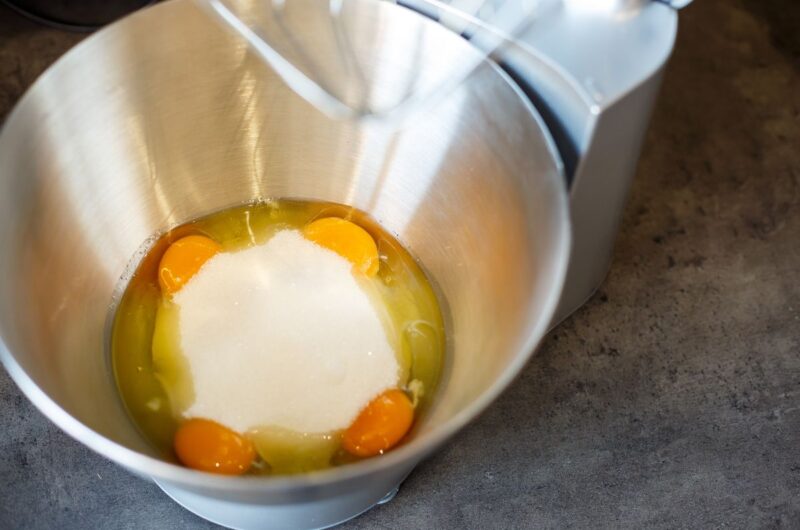Potbelly Sandwich Shop is a haven for those who crave comfort food with a touch of nostalgia. Their sugar cookies, an iced and incredibly buttery treat that transports you to childhood with each bite, are the stuff of legend among cookie aficionados. Capturing the flavors and textures of these beloved confections at home is a pursuit that countless bakers have embarked upon. If you’re one of them or just starting, this guide is your secret weapon. Here, we’ll reveal the recipe that mirrors potbelly sugar cookie so you can enjoy their magic from the comfort of your kitchen.
Copycat Potbelly Sugar Cookie Recipe: A Delightful Treat for Home Bakers
Course: Cookies, RecipesCuisine: German ProtestantsDifficulty: Easy1
servings5
minutes9
minutes131.5
kcalCapturing the flavors and textures of these beloved confections at home is a pursuit that countless bakers have embarked upon. If you’re one of them or just starting, this guide is your secret weapon. Here, we’ll reveal the recipe that mirrors potbelly sugar cookie so you can enjoy their magic from the comfort of your kitchen.
Ingredients
Two ¾ cups of all-purpose flour
One teaspoon of baking soda
½ teaspoon baking powder
1 cup unsalted butter, softened
1 ½ cups white sugar
One egg
Two teaspoons of vanilla extract
¼ cup granulated sugar (for coating)
Prepared frosting (for icing, optional but recommended)
Directions
- Preheat your oven to 350 degrees F (175 degrees C).
- In a small bowl, stir together the flour, baking soda, and baking powder. Set aside.
- Using a mixer, cream the butter and sugar together until smooth. Beat in the egg and vanilla. Gradually blend in the dry ingredients. Roll rounded teaspoonfuls of dough into balls and place onto ungreased cookie sheets. Do not flatten.
- Place the granulated sugar in a small bowl. Dip the bottom of a glass into the sugar and then press onto the dough balls to flatten. Dip the glass into the sugar for every two or three cookies you flatten.
- Bake for 10 to 12 minutes in the oven or until the cookies brown. Allow them to cool on the baking sheets for a couple of minutes before transferring to wire racks to cool completely.
- Once thoroughly cools the cookies, you can ice them with your desired frosting.
Recipe Video
For more delicious homemade cook recipes, check out here-
- Bloomin Fried Chicken / Crack Green Beans Cookbook / Crispy Chicken Fritta
- Patti LaBelle Mac and Cheese / Oshinko Roll Sushi / Bibingka Bisaya Recipe
- Chitterlings Recipe / Sopa de Salchichon Recipe / Belizean Panades Recipe
- Tennessee Onions Recipe / Butter Swim Biscuits / Perry’s Steakhouse Pork Chop
- Papas Locas / Hooters 911 Sauce / Mutkule Recipe / Santiago’s Green Chili Recipe /
- Texas Roadhouse Prime Rib Au Jus Recipe / 14 Best Selena and Chef Recipes
- Cajun Ninja Sticky Chicken / Veal Stew Recipe Italian / Corn Nuggets / Milanesa Steak
- Red Lobster’s Shrimp Scampi Recipe / Texas Roadhouse Chili / Tortellacci Pasta
Tips and Tricks
Replicating a favorite cookie from a popular chain requires precision and patience. Here are some tips to help you nail the recipe:
Precision in Preparations
- Use the exact measurements provided for the best results. Baking is a science; even slight variations can affect the final product.
- Ensure that the butter is genuinely softened, as it will significantly impact the texture of the dough.
- Refrain from overmixing the dough when combining the wet and dry ingredients; overmixing can lead to tough cookies. Mix until just combined.
- Make sure to dip the bottom of the glass in sugar for every two or three cookies. This will prevent sticking and ensure an even sugar coating on each cookie.
Playing with Flavors
- Love a tangy twist? Add a teaspoon of lemon zest to the dough for a bright, citrusy flavor.
- Want to switch it up? Roll the dough balls in cinnamon sugar instead of plain granulated sugar for a warm, cozy kick.
- Craving some crunch? Add chopped nuts or chocolate chips to the dough for added texture.
Storing and Freezing
- The cookies can be stored in an airtight container at room temperature for up to 5 days.
- Place the cookies in a freezer-safe container for extended storage and freeze for up to 3 months. Thaw at room temperature before serving.
- You can also freeze the cookie dough for up to 3 months. Scoop the dough into balls, place on a baking sheet, and freeze until solid. Transfer the frozen dough balls to a zip-top bag and return them to the freezer. When ready to bake, place the frozen dough balls on a baking sheet and let them thaw for 15 minutes before baking as usual.
Achieving the Ideal Cookie Texture
- Reserve the temptation to overbake. The edges should start browning for that perfect chewy texture.
- Coating the glass with sugar before flattening the dough helps provide a subtle crunch.
- Cool the cookies on the baking sheet for a few minutes before transferring them to a wire rack. This allows them to set without becoming rigid.
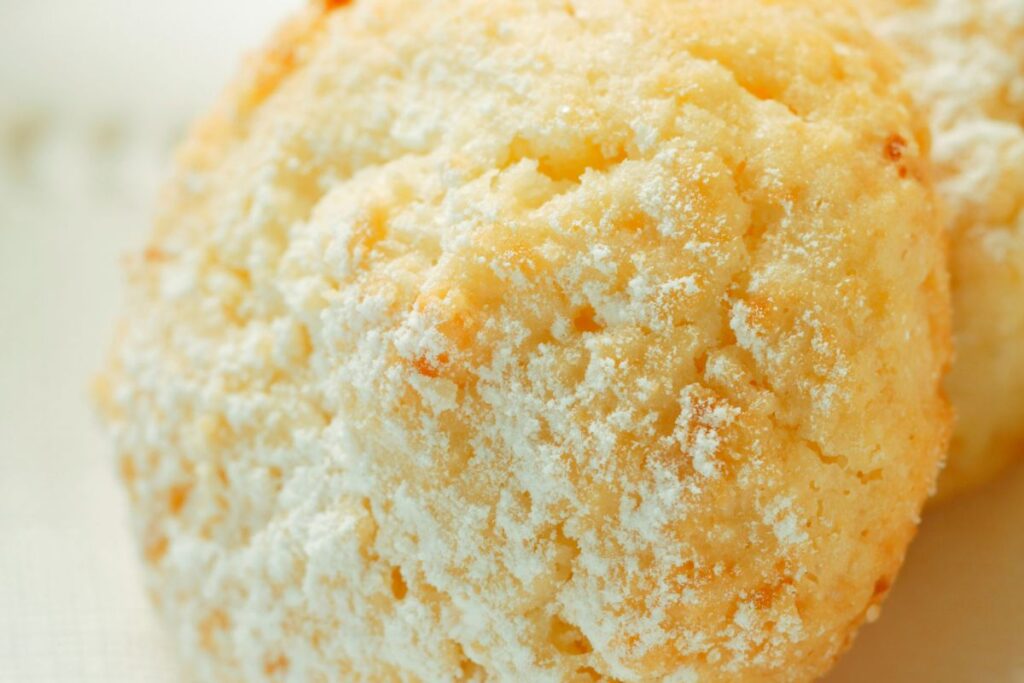
Variations and Customizations
Adding a Personal Touch
- Add a pinch of salt to the dough to balance the sweetness and enhance the flavors.
- For a festive or seasonal twist, mix in colored sprinkles or other decorations before baking.
- Use extracts like almond or lemon for a subtle change in flavor that complements the cookie’s profile.
Making it Vegan or Gluten-Free
- Swap the butter for a plant-based alternative such as coconut oil or vegan margarine to make this recipe vegan. You can also use a flax egg (1 tablespoon ground flaxseed + 3 tablespoons water) instead of the egg.
- Use a gluten-free all-purpose flour blend instead of regular flour for a gluten-free option. Check the baking powder and soda labels, as some may contain gluten.
Making it a Sandwich
- Create a cookie sandwich with a sweet filling like flavored buttercream, Nutella, or chocolate ganache.
- Spread a layer of peanut butter between two cookies for a classic, indulgent treat.
- Fill a sandwich with a creamy cheesecake mixture and withered berries for a savory-sweet twist.
Photography and Presentation
The appeal of your homemade copycat cookies doesn’t stop at taste; presentation plays a crucial role in the delight they bring. Here are a few photography tips to ensure your Potbelly sugar cookies look as professional as they taste:
- Capture the cookies in natural light for the most delicious look.
- Arrange the cookies on a clean, simple backdrop to keep the focus on the treats.
- Experiment with angles and close-ups to show off the texture and any custom decorations.
Sharing and Community
The joy of baking these cookies doesn’t have to end with your bite. Engage with your communities by sharing your experience and encouraging others to do the same. Social media platforms and community forums are great places to connect with fellow bakers. Encourage them to share their images and stories, and you might discover a new trick or variation to try.
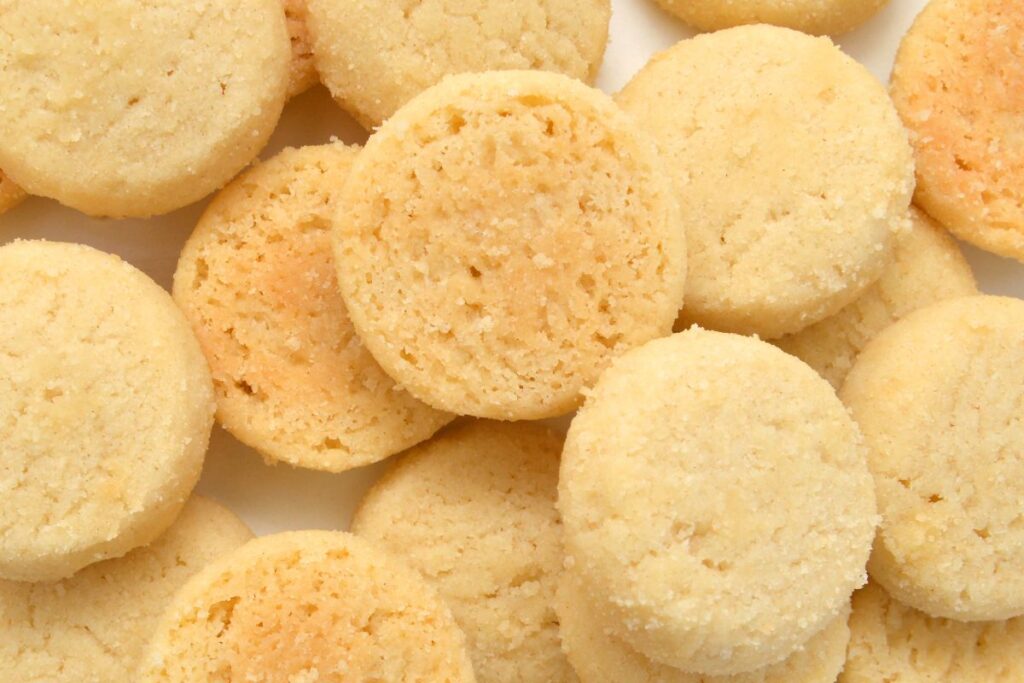
Popular Cookie Varieties
Chocolate Chip Cookies
- Origin: United States, 1930s. A classic favorite consisting of butter-rich dough studded with semi-sweet chocolate chips.
- Key Features: Crisp edges, soft and chewy center, with melted chocolate chips.
Oatmeal Raisin Cookies
- Origin: Great Britain adapted over time to America. These cookies combine oats, raisins, and sometimes nuts, offering a chewy texture and slightly spiced flavor.
- Key Features: Soft, chewy, often spiced with cinnamon, and packed with plump raisins.
Macarons
- Origin: France, with early versions dating back to the Renaissance. Macarons are tiny, round, sweet meringue-based confectionery.
- Key Features: Smooth, crisp shell, ruffled circumference (the “foot”), and a soft, slightly chewy interior.
Snickerdoodles
- Origin: Possibly German origin, popularized in the United States. They are known for their cracked surface and can be crisp or soft depending on the ingredients used.
- Key Features: Rolled in cinnamon sugar, characterized by a tangy flavor due to the cream of tartar.
Gingerbread Cookies
- Origin: Europe, dating back to the 15th century. These cookies are a holiday staple, known for their spices and molasses.
- Key Features: Rich with spices like ginger, cloves, nutmeg, or cinnamon, often cut into festive shapes.
Shortbread Cookies
- Origin: Scotland, with a rich history dating back to medieval times. Shortbread is a traditional Scottish dessert with butter, sugar, and flour.
- Key Features: Crumbly, buttery, and slightly sweet, often pricked with a fork to create designs.
Salpores de Arroz Cookies
- Origin: Central America. These cookies are a traditional treat made from rice flour, which gives them a unique texture and flavor distinct from other cookies.
- Key Features: Light and crumbly texture, subtly sweet, often dusted with powdered sugar or sesame seeds. Salpores de Arroz are known for their delicate rice flour base, making them a gluten-free option that doesn’t compromise taste or texture.
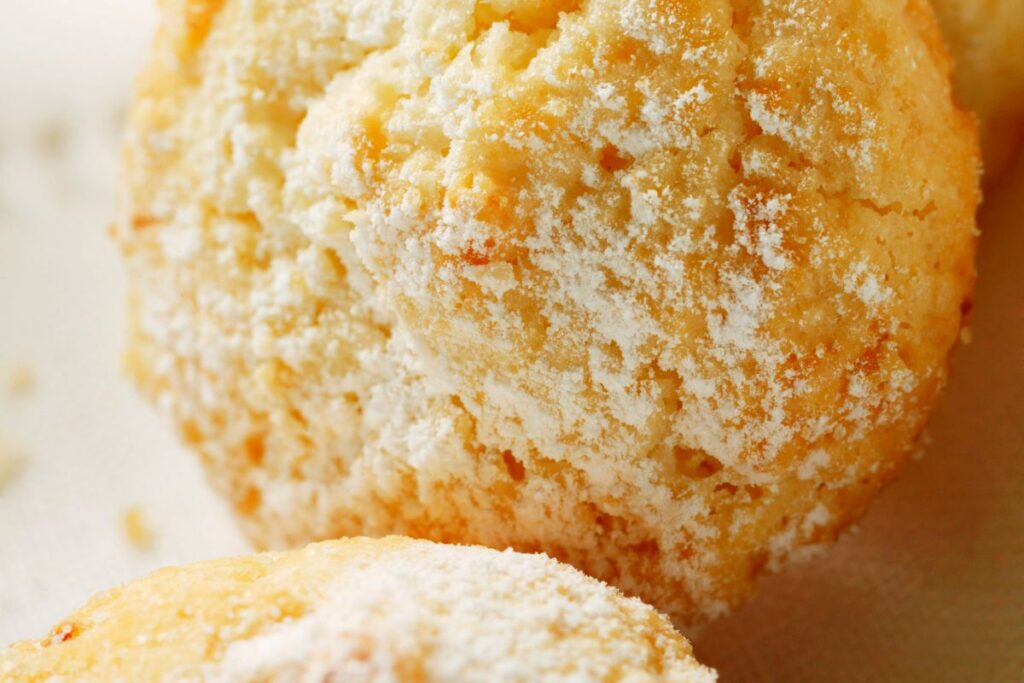
Gingerbread Latte Cookies
- Origin: Inspired by the classic holiday gingerbread and the popular coffeehouse gingerbread latte, these cookies bring a modern twist to traditional flavors. They embody the cozy warmth of winter spices and coffee’s rich, comforting taste.
- Key Features: These aromatic cookies boast a blend of ginger, cinnamon, and nutmeg, with an added depth from espresso powder. Topped with a simple espresso-infused icing, they offer a perfect balance of sweet and spicy, with a subtle coffee finish that coffee lovers will adore.
Insomnia Cookies
- Origin: United States, founded in 2003. Initially started to cater to college students’ late-night cravings, Insomnia Cookies has grown into a widely recognized brand with locations across the country.
- Key Features: Known for their wide variety of cookie flavors, from classic chocolate chips to more inventive creations like s’mores. Insomnia Cookies are especially appreciated for their warm, soft, and gooey texture, often enjoyed late at night. Their service model is unique, offering not just in-store purchases but also late-night delivery, ensuring that customers can enjoy fresh, warm cookies right to their doorsteps at almost any hour.
Conclusion
Baking the perfect copycat Potbelly sugar cookie is an achievement worth celebrating. Replicating a well-loved treat can be just as satisfying as the result, especially when shared with others. Take pride in your ability to recreate a beloved food item from scratch. Happy baking!
Frequently Asked Questions (FAQs) about Potbelly Sugar Cookie Recipe
Can I use brown sugar instead of white sugar for Potbelly sugar cookies?
Yes, you can use brown sugar in place of white sugar. Brown sugar, due to the presence of molasses, will give the cookies a slightly moist texture and a deeper flavor.
How long can I store the baked cookies?
Potbelly sugar cookies can be stored in an airtight container at room temperature for up to a week. Consider freezing the cookies for up to 3 months for more extended storage.
Can I add nuts or chocolate chips to the recipe?
Absolutely! You can customize your cookies by adding nuts, chocolate chips, or any other mix-ins you prefer. Just fold them gently into the dough to maintain the cookies’ structure.
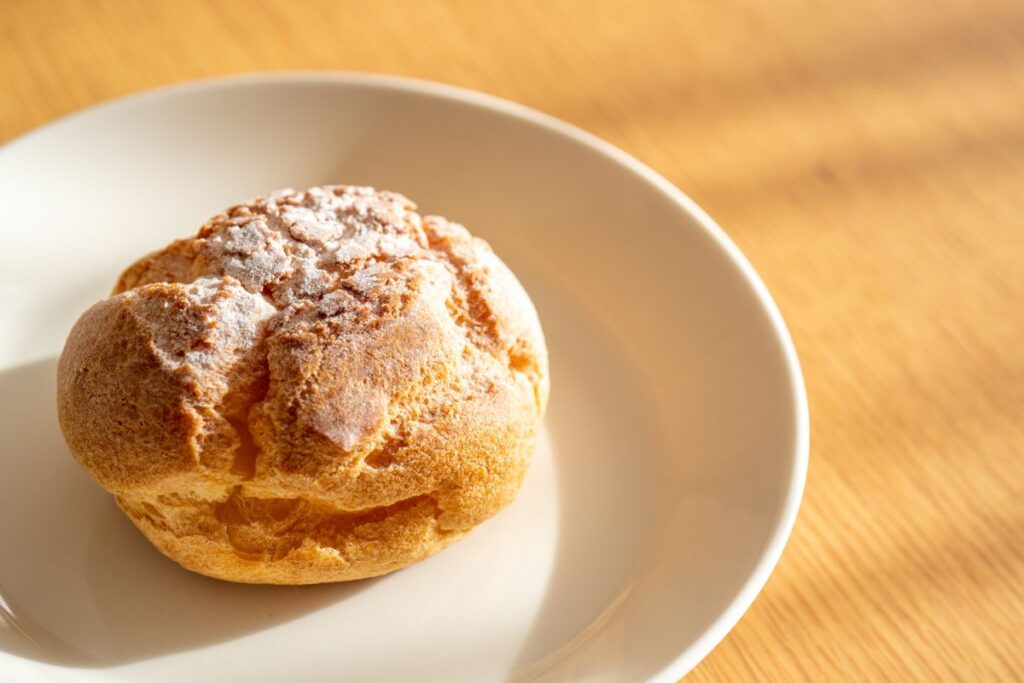
Why did my cookies spread too much?
Cookies spread for various reasons, including too much sugar, butter that’s too soft, or a warm dough. To prevent excessive spreading, make sure your dough is chilled before baking.
Is it necessary to chill the dough?
While it’s not strictly necessary, chilling the dough for at least 30 minutes before baking helps the dough handle better and reduces spreading, resulting in thicker, more flavorful cookies.
Can I make the dough ahead of time?
Yes, the cookie dough can be made ahead of time. It can be refrigerated for up to 3 days or frozen for up to 3 months. Make sure to tightly wrap the dough and thaw overnight in the refrigerator if frozen.
Are these cookies freezer-friendly?
Yes, both the dough and the baked cookies are freezer-friendly. Freeze the dough in a tightly sealed container or wrap the baked cookies in plastic wrap and store them in airtight bags.


